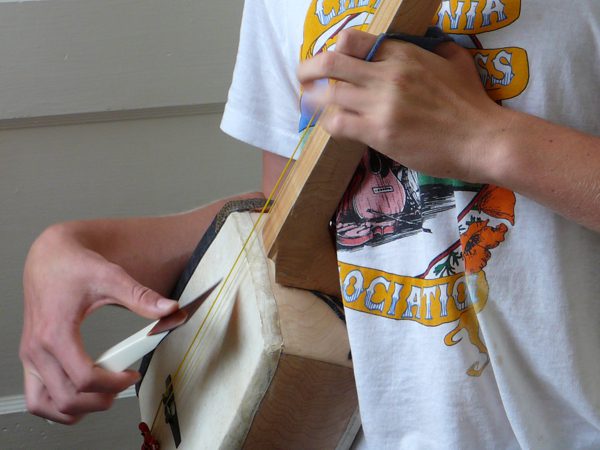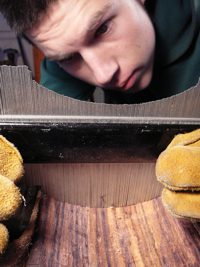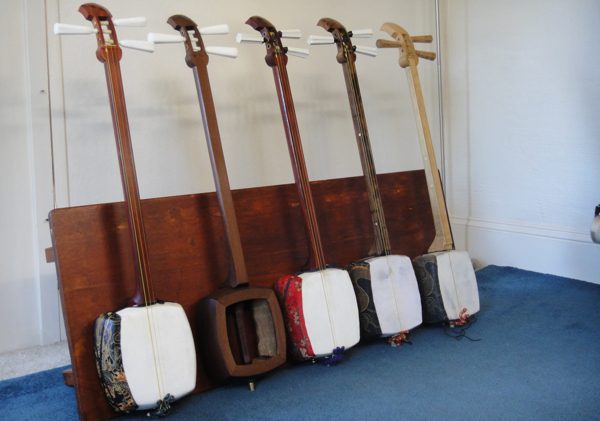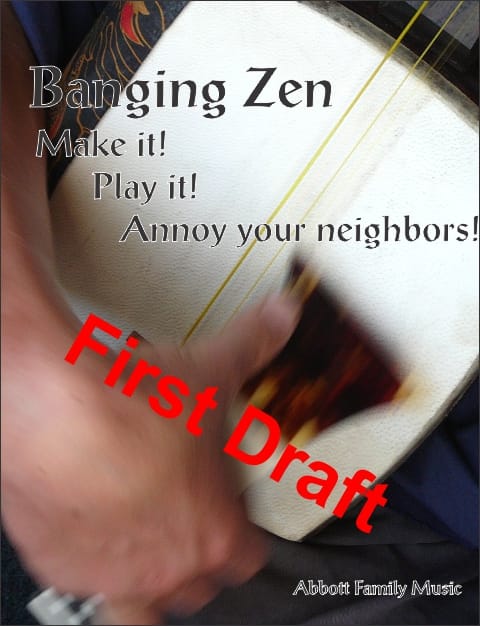At the time of learning from Kevin, I was practicing tsugaru pieces with a nagauta-style shamisen (the relatively smaller size). Though it worked perfectly fine, Kevin’s monster-size tsugaru shamisen looked so cool!

Unfortunately, he said that a good quality tsugaru shamisen would cost about $1800. Yes, that’s a high priced entry point! I couldn’t spend that much on an instrument not knowing if I’d still be interested a few months later.
My father, who’s always been an advocate of DIY, encouraged me to try making one myself. Why not? Knowing almost nothing about woodworking, making a shamisen would be a good experience.
With my dad’s jack-of-all-trade’s skill and Kevin’s generosity, we were able to reverse engineer and record the measurements and dimensions of his shamisen. After some basic practicing, I bought some hardrock maple and was ready to begin!
The thought of building any instrument can seem daunting and demanding of precision. This is surprisingly not the case for shamisen. Of course, making a professional grade shamisen takes many years of woodworking experience, but you can easily make a fun and great sounding homemade shamisen with very little skill and money. I should know, I made my first homemade shamisen at age 16 with almost no woodworking skill!

46f458d06e7a04fc7633d11f0487b2d3bebddb02
Not bad for a first attempt with no manuals nor skill!
Being almost out of high school (well, the homeschool equivilent) and having little work to do in the winter, I was able to spend about 10 hours a day in the shop, making up for lack of skill by working slowly and carefully.
The only instructional material available was a short documentary of a shamisen maker showing his craft for a Tokyo Tourism video, that was all. Studying the video was very helpful, but so much of the process was still shrouded in mystery and lack of experience.

Fortunately, my father has lots of skills ranging from building shakuhachi to house construction, so he offered me advice whenever I was confused. In three months time, I had completed my very first homemade shamisen! For the very first attempt without any written instruction, it naturally looked… ‘homemade’. But all things considered, it was definitely playable and sounded charming!

One year after completing my first homemade shamisen, I felt ready to build another one. The experience of the first attempt revealed many adjustments I wanted to make for the second. (Deeper body cavity, making the curves more rounded) The experience was just like how children first learn to walk, talk and play music – stumbling and making mistakes.
My first shamisen was nowhere close to my goal of replicating a professional shamisen, but the experience built a connection to the process and an internal understanding of where to go from there.

Since then, I kept making more shamisen, each time discovering new tricks and ideas which I brought to the next attempt. Eventually, I succeeded in duplicating the size, sound and feel of a professionally-made shamisen. And it all started from just jumping in with no skill!
If you have any interest to try, I would highly recommend building a shamisen for fun. There is no perfect way to do it, nor requirements to complete. Keep building and keep experimenting! Just like learning music as a child (explained in Ch 1: The Early Year), the most important point is to just experiment, explore and have fun, and the skill will grow from there!
Discovering Shami-Interest in the World
Having been inspired by the Tokyo Tourism videos, I filmed the whole construction process of my first homemade shamisen and uploaded it to the newly released Youtube. To my surprise, people were watching! Ehh?? How is this possible? What’s more, folks wrote comments such as, “This is beautiful, makes me very happy to watch.” and “… and I wonder how many INTERESTING VIDEOS have I watched recently… not many… thank you once more!!!”
I was surprised that there were other international shamisen enthustiasts! I wondered, “Was I (and my shami-buddy, Grant Reimer) not the only one interested in Shamisen outside of Japan?”

Homemade Shamisen: Newest to oldest (Left to right)
Shamisen of Japan!
After uploading the construction videos on YouTube, more and more people wrote, saying they wished to learn to play or build one for themselves. I wanted to do something to help them. After all, it was all thanks to having local open-minded shamisen players (Kevin and Grant) and a knowledgeable supportive family that I was able to make and play shamisen. The knowledge I gained, however small, could be enough to help others do the same.
So while building my second homemade shamisen, I documented the entire construction process, as well as compose a how-to-play guide and compiled it all into a complete step-by-step instructional book (“Banging Zen”, later renamed to “Shamisen of Japan”).
Not only would this book provide other shamisen enthusiasts with a path to learn techniques, songs and construction, but it would be a great resource to myself if I ever forgot how to build it! (Shamisen of Japan underwent many revisions over the years, updated with new information, pictures and tricks.)


